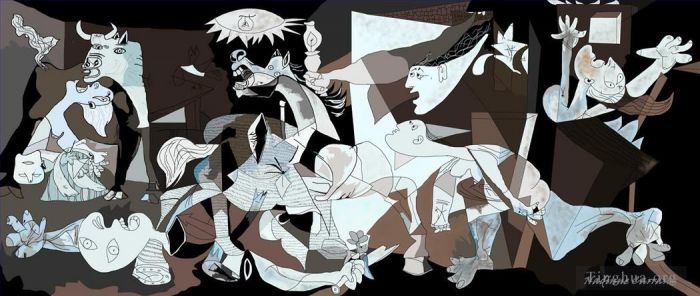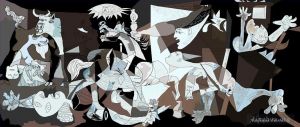- >> Art Knowledge
- Back to Knowledge Index
- I'd like to edit Major Schools of Abstract Painting
- I'd like to compile new knowledge about Oil Painting
Major Schools of Abstract Painting
- Last editing time 2016-05-17 15:56:59
-
Abstract oil painting is a canvas that is created using a visual language of form, colors and lines. Abstraction indicates a departure from reality in depiction of imagery in art. Abstract oil painting departure from accurate representation can be slight, partial, or complete. Abstraction exists along a continuum. Even art that aims for verisimilitude of the highest degree can be said to be abstract, at least theoretically, since perfect representation is likely to be exceedingly elusive.
Abstract expressionism art is a post–World War II movement in American painting, developed in New York in the 1940s. It was the first specifically American movement to achieve international influence and put New York City at the center of the western art world, a role formerly filled by Paris. In the United States, Alfred Barr was the first to use this term in 1929 in relation to works by Wassily Kandinsky. Abstract Expressionism paintings influenced all those later movements that evolved.
Cubism is an early-20th-century avant-garde art movement pioneered by Pablo Picasso. Cubism painting has been considered the most influential art movement of the 20th century. The term is broadly used in association with a wide variety of art produced in Paris during the 1910s and extending through the 1920s. Variants such as Futurism and Constructivism developed in other countries. In Cubists' abstract paintings, objects are analyzed, broken up and reassembled in an abstracted form, the artist depicts the subject from a multitude of viewpoints.
Dada or Dadaism was an art movement of the European avant-garde in the early 20th century. Dada rejected reason and logic, prizing nonsense, irrationality and intuition. Dadaism art primarily concentrated its anti-war politics through a rejection of the prevailing standards in art through anti-art cultural works. Dada paintings influenced later styles like the avant-garde and downtown music movements, and groups including surrealism, Nouveau réalisme, pop art and Fluxus.
Expressionism art was a modernist movement, initially in poetry and painting, originating in Germany at the beginning of the 20th century. Its typical trait is to present the world solely from a subjective perspective, distorting it radically for emotional effect in order to evoke moods or ideas. Expressionist artists sought to express meaning or emotional experience rather than physical reality. Expressionism is applied mainly to 20th-century artworks. The Expressionist emphasis on individual perspective has been characterized as a reaction to positivism.
Pop art is an art movement that emerged in the mid-1950s in Britain and in the late 1950s in the United States. Pop art presented a challenge to traditions of fine art by including imagery from popular culture. In pop art, material is sometimes visually removed from its known context, isolated, and/or combined with unrelated material. The concept of pop art refers not as much to the art itself as to the attitudes that led to it. Pop art and minimalism are considered to precede postmodern art, or are some of the earliest examples of Post-modern Art themselves.
Surrealism art is a movement that began in the early 1920s, and is best known for its visual paintings. The aim was to "resolve the previously contradictory conditions of dream and reality." Surrealist paintings feature the element of surprise, unexpected juxtapositions and non sequitur; however, many Surrealist artists regard their artwork as an expression of the philosophical movement first and foremost, with the paintings being an artifact. Surrealists painted unnerving, illogical scenes with photographic precision, created strange creatures from everyday objects.
Fauvism is the style of "the wild beasts", a loose group of early twentieth-century Modern artists whose paintings emphasized painterly qualities and strong color over the representational or realistic values retained by Impressionism. The leader of Fauvism was Henri Matisse. Fauvism can be classified as an extreme development of Van Gogh's Post-Impressionism fused with the pointillism of Seurat. The Fauvism paintings were characterized by seemingly wild brush work and strident colors, while their subject matter had a high degree of simplification and abstraction.

Bibliography: \
- Copyright Statement:
All the reproduction of any forms about this work unauthorized by Singing Palette including images, texts and so on will be deemed to be violating the Copyright Laws.
To cite this webpage, please link back here.









 Singing Palette
Singing Palette